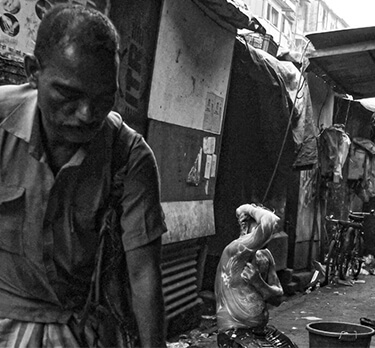The Water Carriers of Mumbai
This photo essay captures the lives of the bhistees, once revered as the messengers of bahisht or paradise,
but who today are fast fading into oblivion from the face of the city.
Deep within the bylanes of the older sections of Mumbai, stroll a few men carrying on their aching shoulders a goatskin
water carrier or mashq and the legacy of a community that quenched the thirst of innumerable parched throats.
CONTRIBUTORS
Photo essay by Mohmad Aslam Saiyad
Story written by Minaz Ansari (English and Urdu) based on inputs by Mohmad Aslam Saiyad
Voice over Mohmad Aslam Saiyad
मुंबईचे पाणी वाहक
या दृक्श्राव्य कथानकाच्या माध्यमातून भिश्ती बांधवांचे, अर्थात मानवी रूपातील पाणी वाहकांचे चित्र आपल्या समोर उभे करण्याचा हा प्रयत्न. एकेकाळी देवदूत म्हणून ओळख मिळालेले हे चेहरे विलक्षण गतीने शहरच्या विस्मृतींचा एक भाग होत आहेत.
मुंबईच्या जुन्या परिसरात, बकऱ्याच्या चामडीपासून बनलेल्या पाण्याच्या पिशव्या म्हणजेच पखाल आणि असंख्य तहानलेल्यांची तहान शमविणाऱ्या समाजाचा वारसा, वजन वाहून जड झालेल्या आपल्या खांद्यावर वाहणारे काही पांथस्थ फिरत असत.
योगदान
Pछायाचित्र आणि कथा मांडणी: मोहमद अस्लम सैयद
कथा: मिनाझ अन्सारी (विशेष साहाय्य मोहमद अस्लम सैयद)
पार्श्वध्वनी: मोहमद अस्लम सैयद

